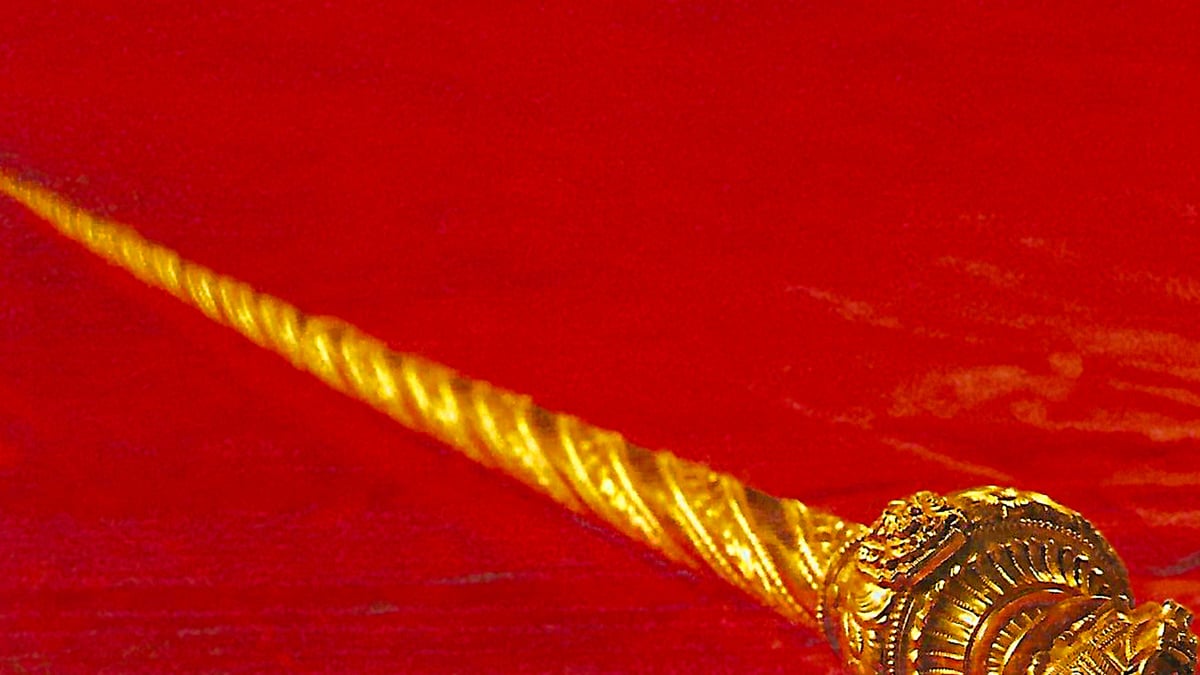On Hindutva ideologue VD Savarkar’s birth anniversary on May 28, 2022, Prime Minister Narendra Modi had said in a video message on Twitter: ‘It is Savarkar’s teaching that we have made nationalism the pivot for nation building’. A year later, on the 140th birth anniversary of Savarkar, the prime minister is all set to inaugurate the new parliament building by installing the 77-year-old Sengol (sceptre) – a symbol of sovereignty, strength and righteousness.
Even though the central government’s decision to bring the Sengol back to the national capital sparked a debate and discussion about the BJP’s Tamil outreach – by including their tradition and culture into national politics – there are several other arguments behind it as well. The primary one is controlling the “Hindutva” and “Bharartiya” narrative.
The date chosen for the inauguration, the procedures and rituals designed to mark the ceremony are crucial and relevant for the upcoming political developments, especially the 2024 Lok Sabha elections. Senior politicians and experts said it was also a veiled reminder from the government on how the Congress-led government treated Indian culture in the past, and how the party “wronged” Savarkar.
Sanjeev Sanyal, member of the economic advisory council to the prime minister of India, told News18, “I am very pleased that the Sengol has been brought back. It symbolises both transfer of sovereignty to the Indian people after centuries of foreign occupation, and also symbolises the continuity of an ancient civilisation. It is shocking that most Indians were unaware of its existence all these years.” Sanyal, also an author, has written several books on Indian history and traditions.
The decision of bringing and establishing the Sengol to the new parliament building symbolises an “integration of north and south”, said union home minister Amit Shah while announcing the Centre’s decision on Wednesday.
According to political experts, it is one of the many efforts of the government to bring the focus back on ancient Indian traditions, history and civilisational facts and, thereby, dominate the narrative of “Indianness” and “decolonisation”.
“It is definitely not special about Tamil outreach, but it is about the national ethos. There used to be different kinds of kingdoms in ancient India. In the Tamil epic ‘Silappathikaram’, Sengol was mentioned as a tradition observed in Kerala kingdoms as well. It is a symbol of ensuring rule of law, sanctity of government. Sengol should not be confined to language or state, let us not fall into the trap of bifurcating states, culture and languages. Culture is constant and immortal. It is about decolonising, bringing back the Indianness and Indian ethos,” said Sachchidanand Joshi, member secretary, executive and academic head of Indira Gandhi National Centre for the Arts (IGNCA).
He added: “It is not only putting us away from history and lineage, but a deliberate attempt to put us in an inferiority complex not only by foreign rulers but also by some of our former governments.”
Savarkar, Sengol and ‘Swatantrata’
There has been dismay among intellectuals and politicians about the nondescript location of the Sengol for decades as many of them took to social media to post photos of it in the museum and expressed anguish over it.
“The day happens to be Savarkar’s birthday. Vinayak Savarkar was a very important part of our freedom struggle, and it is a befitting tribute to him as well,” said Sanyal, who is the author of Revolutionaries: The Other Story of How India Won its Freedom.
There are senior officers, important members in the government who claim that the date was only a “coincidence, not a conscious decision”; there is another section in the RSS-BJP who feel all of these – the date, Vedic rituals, decision to bring in history, tradition and the historic 77-year-old Sengol (sceptre) – are “intertwined”.
“Apart from using the ancient symbol and Hindu rituals as the pivot of the process, the government and the new Parliament Bhawan, this is also a way to dominate the political narrative about Indianness. This is also a part of the decolonisation process and the new government’s efforts to celebrate ‘swatantrata’ in the ‘Amrit Kaal’,” said a senior historian, who is also a member of the RSS.
On a day when 19 opposition parties and the AIMIM separately boycotted the inaugural ceremony, citing the programme as an instance of “sidelining the high office of the President of India”, Shah announced the government’s decision to install the gold-plated silver staff – known as ‘sengol’ in Tamil, the official and royal symbol of power transfer in southern India – in the new Parliament building.
He also added that the Sengol almost disappeared from people’s view and memory. It was kept in former PM Jawaharlal Nehru’s ancestral house for years and traced in a museum in Allahabad. It was labelled as “golden walking stick gifted to Pt Jawaharlal Nehru”, many intellectuals wrote on social media while sharing its pictures.
“There are many such ancient materials and symbols that this government will bring back and present before people. This is how the process of decolonisation will progress in the ‘Amrit Kaal’,” said a central minister.


